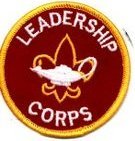Uniforms
For All messages dealing with Scout Uniforms
1715 topics in this forum
-
- 15 replies
- 5.6k views
-
- 60 replies
- 5.5k views
-
- 40 replies
- 5.5k views
-
- 50 replies
- 5.4k views
-
- 52 replies
- 5.4k views
-
- 47 replies
- 5.4k views
-
- 13 replies
- 5.4k views
-
- 40 replies
- 5.4k views
-
- 31 replies
- 5.4k views
-
- 35 replies
- 5.4k views
-
- 42 replies
- 5.4k views
-
- 42 replies
- 5.4k views
-
- 50 replies
- 5.4k views
-
- 9 replies
- 5.3k views
-
- 23 replies
- 5.3k views








